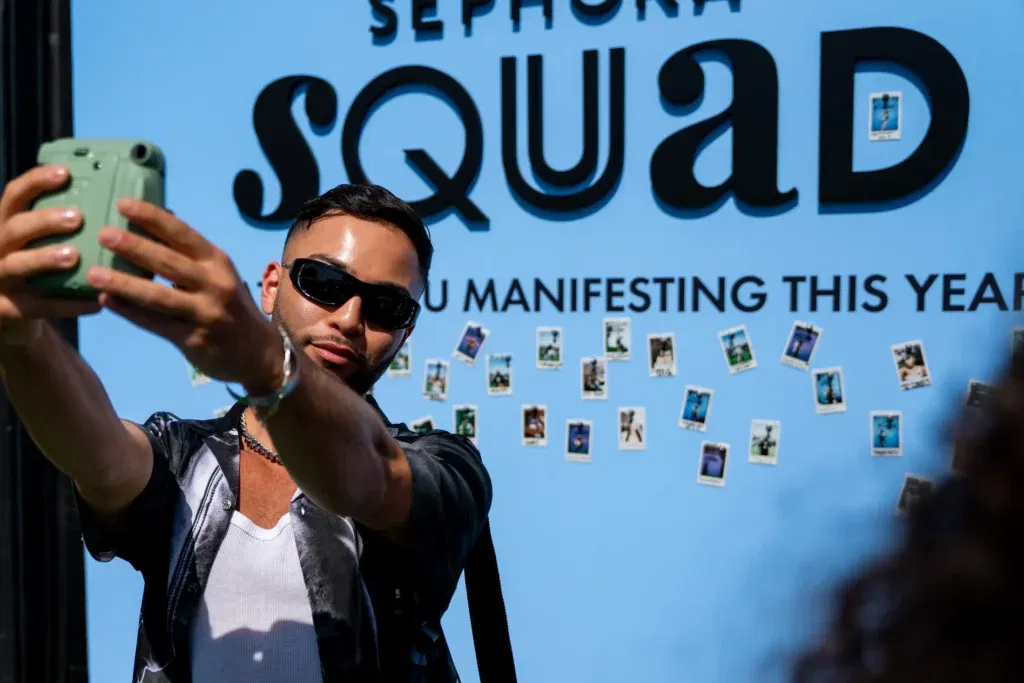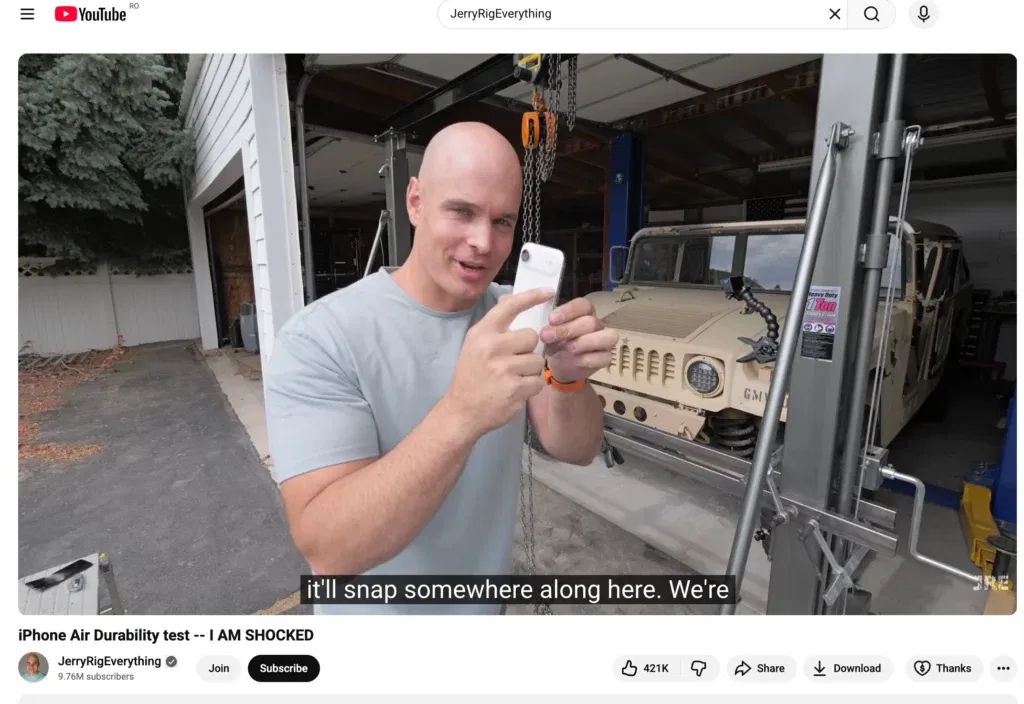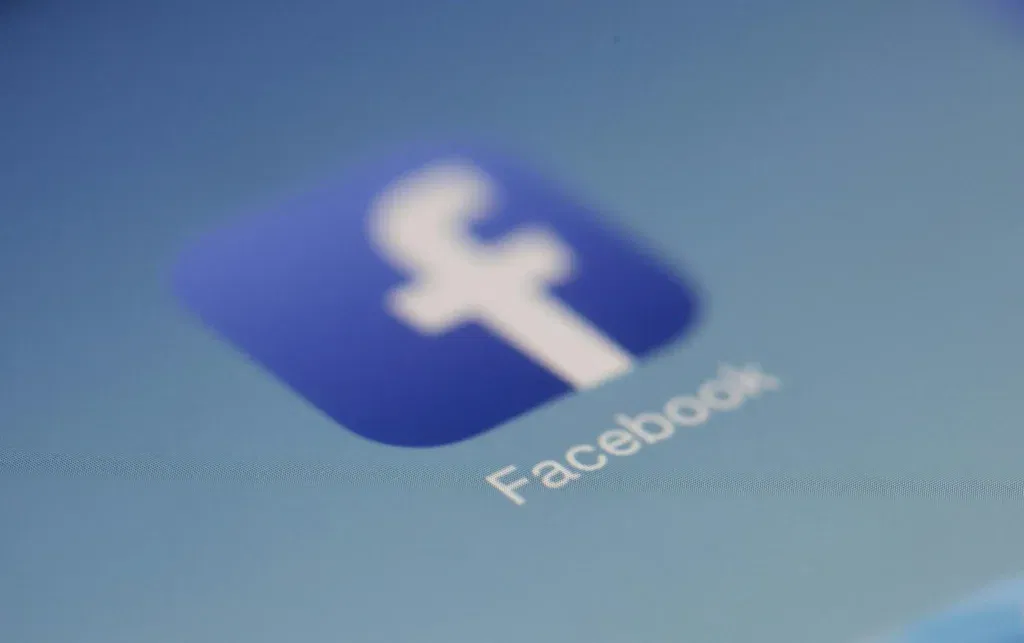Influencer marketing has shifted. Gone are the days when a large following was all a creator needed to work with brands. The spotlight is no longer predominantly on celebrities and mega influencers.
Today, many brands prefer to work with micro-influencers. These content creators have small but loyal followings (between 10,000 and 100,000 followers), and brands trust them for authentic and niche-focused promotion.
Don’t believe it? I’ve curated a list of 19 brands that work with micro-influencers, including popular brands like Sephora and Coca-Cola.
Keep reading to learn about these brands, how to benefit from working with micro-influencers, and how to start your micro-influencer program in 2025.
Table of Contents
19 Brands That Work With Micro-Influencers
See some of the top brands that actively collaborate with micro-influencers to promote their products across platforms like Instagram, YouTube, and TikTok.
1. Sephora
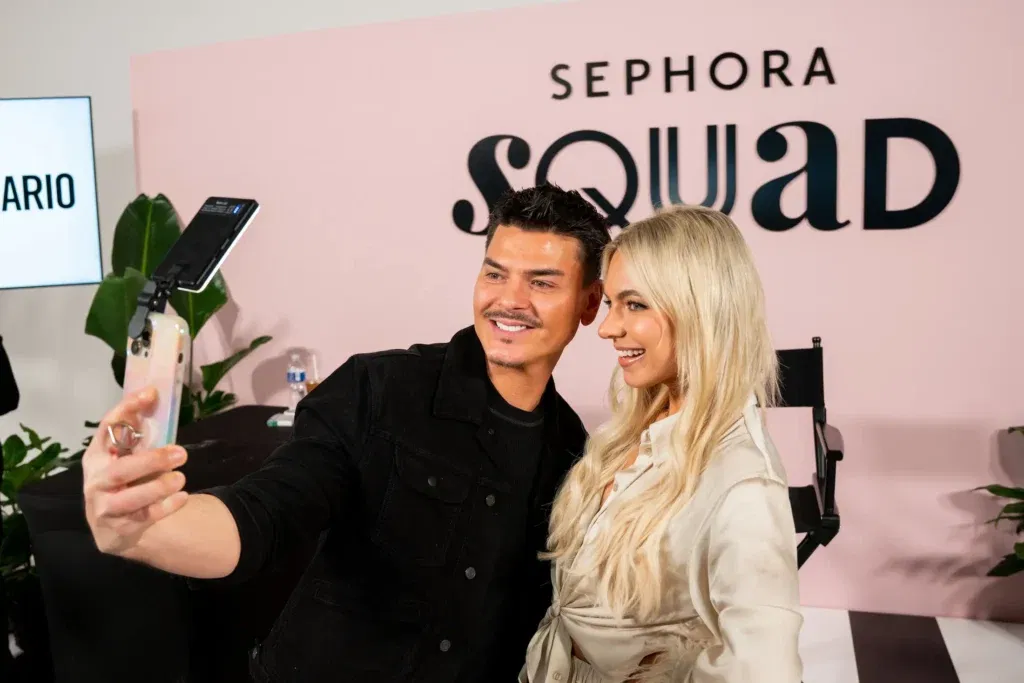
If you open your Instagram app right now and search #sephorasquad, you’ll find over 100,000 posts from fans who have become brand ambassadors of Sephora beauty products. The brand uses influencer collaborations to connect with a larger audience and show that it values authenticity.
Sephora is one of those brands that sends PR boxes to small influencers and invites them to share their honest reviews. As you probably guessed, this builds trust and credibility with their target audience.
2. Glossier
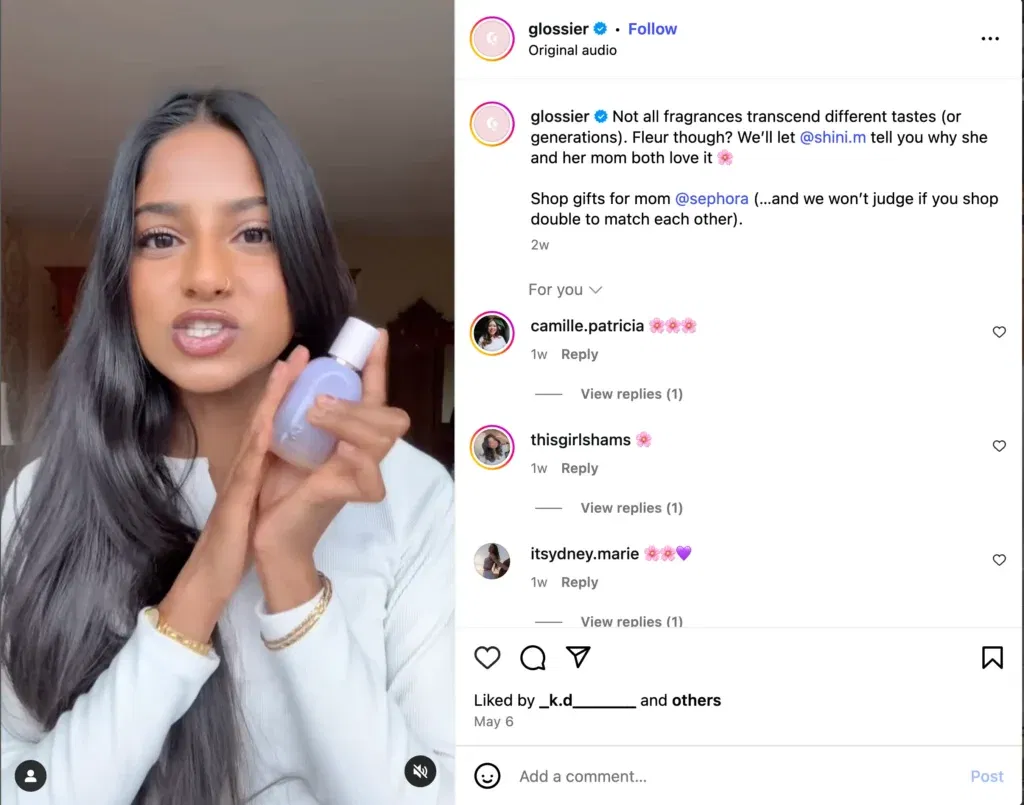
Glossier is another beauty brand that encourages its fan base and customers to become brand evangelists. They offer discounts or other rewards to customers in exchange for posting Glossier products they like. So, anyone can be an influencer for brands like Glossier, regardless of their number of followers, as long as they can share honest opinions about their favorite products.
3. Daniel Wellington
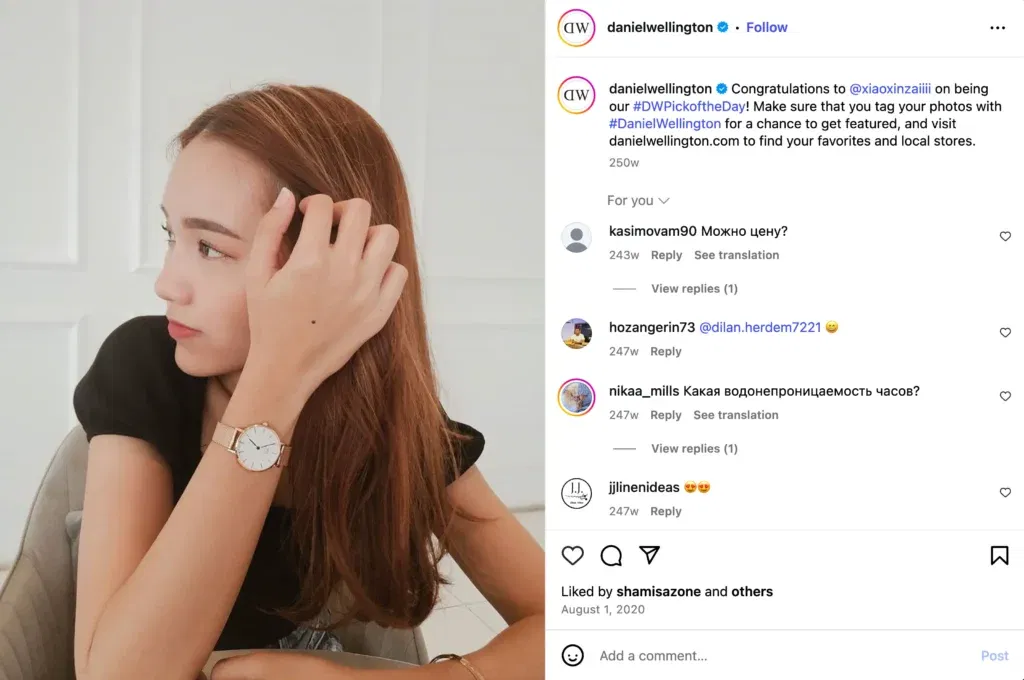
Daniel Wellington is a fashion brand that offers incentives to small influencers to promote its products on platforms such as Instagram. The brand also uses these influencers’ content as user-generated content (UGC) on its feed through their daily #DWPickoftheDay contest.
This adds a little competition to their campaign because it challenges influencers to create outstanding content to feature on Daniel Wellington’s page.
4. Coca-Cola
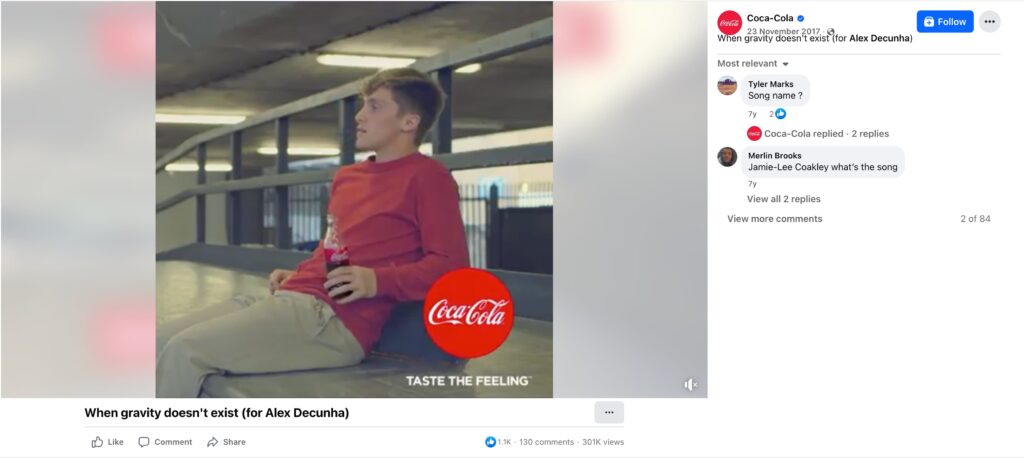
Are you surprised to see Coca-Cola on the list of brands that work with micro-influencers? You’d expect the beverage brand to use macro or celebrity influencers with thousands of followers. However, their influencer marketing campaigns feature micro-influencers, as well.
One particular campaign I remember is the one with @cocacolabelgium. They launched this campaign to connect with Belgian consumers through 14 Instagram influencers in Belgium.
Eight of these influencers had less than 100k followers. The brand picked influencers with different niche audiences to show consumers how their product can fit into their various lifestyles. I say, brilliant!
5. Nike
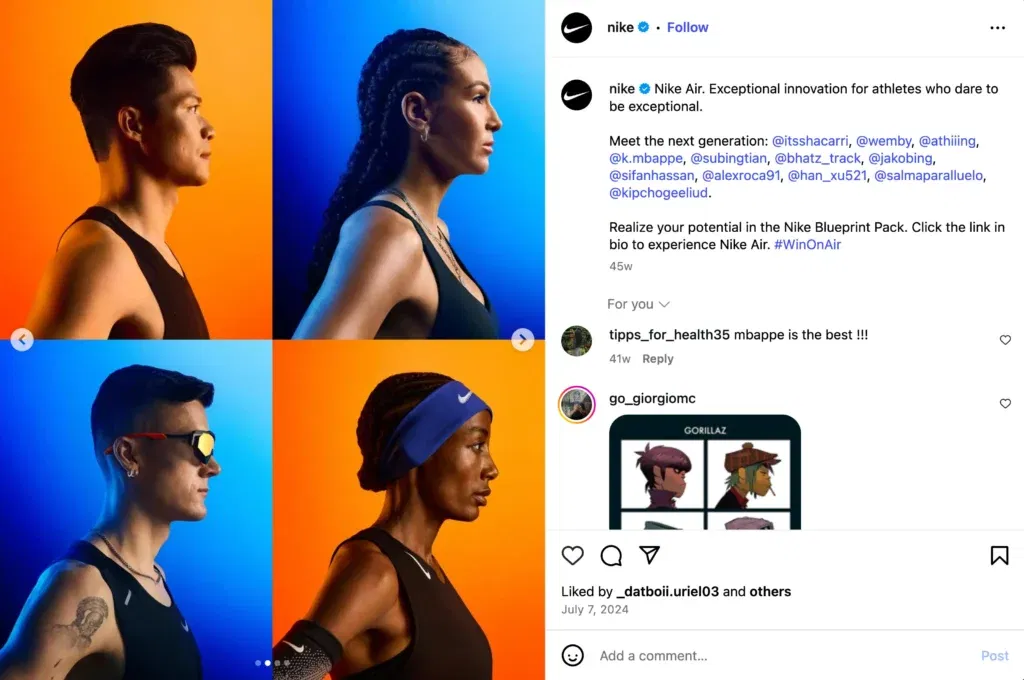
Nike is one of the top fitness apparel brands that recognizes the power of micro-influencers and harnesses it to market their product in a relatable way. Micro-influencers contributed 52% of Nike’s Media Impact Value (MIV) in the first half of 2023. (MIV shows how much a brand’s presence is worth in terms of potential reach and influence.)
6. ASOS
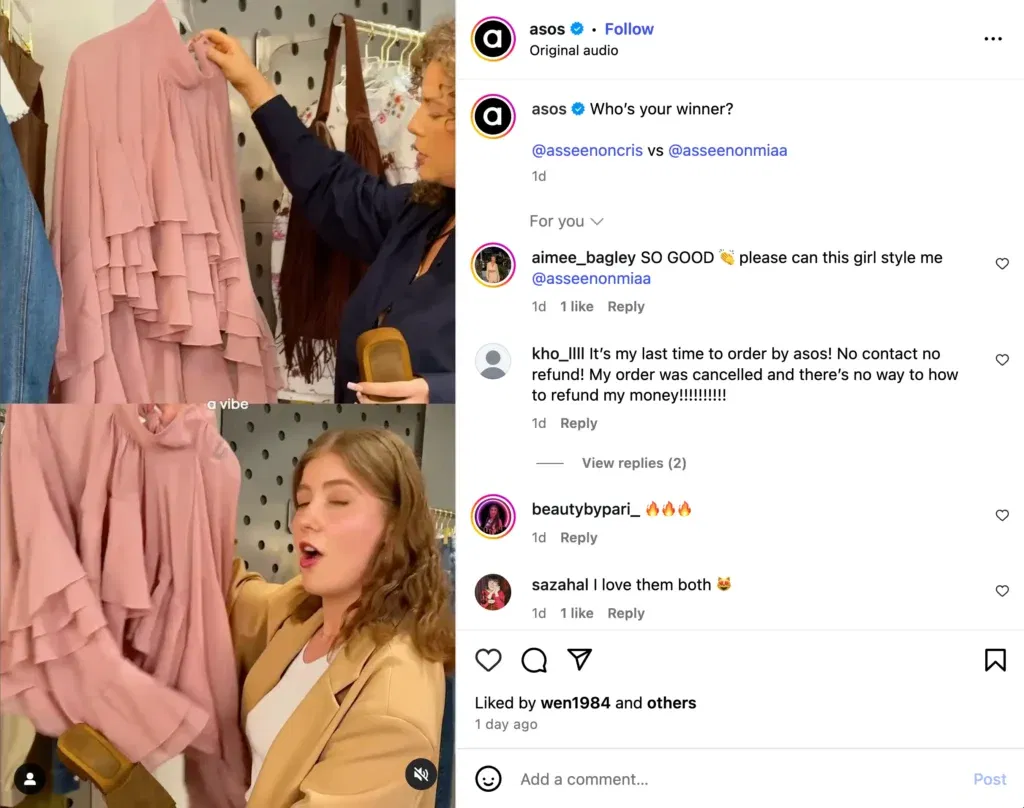
ASOS actively collaborates with small influencers to promote its products and connect with its target audience. They have a campaign called ASOS Insiders, in which selected fashion and beauty influencers share content styling or using the brand’s products with the product code in the caption.
While ASOS selects the influencers they invite to the Insiders program, micro-influencers can draw their attention by posting creative content representing ASOS using the hashtag #ASSEENONME.
7. HelloFresh
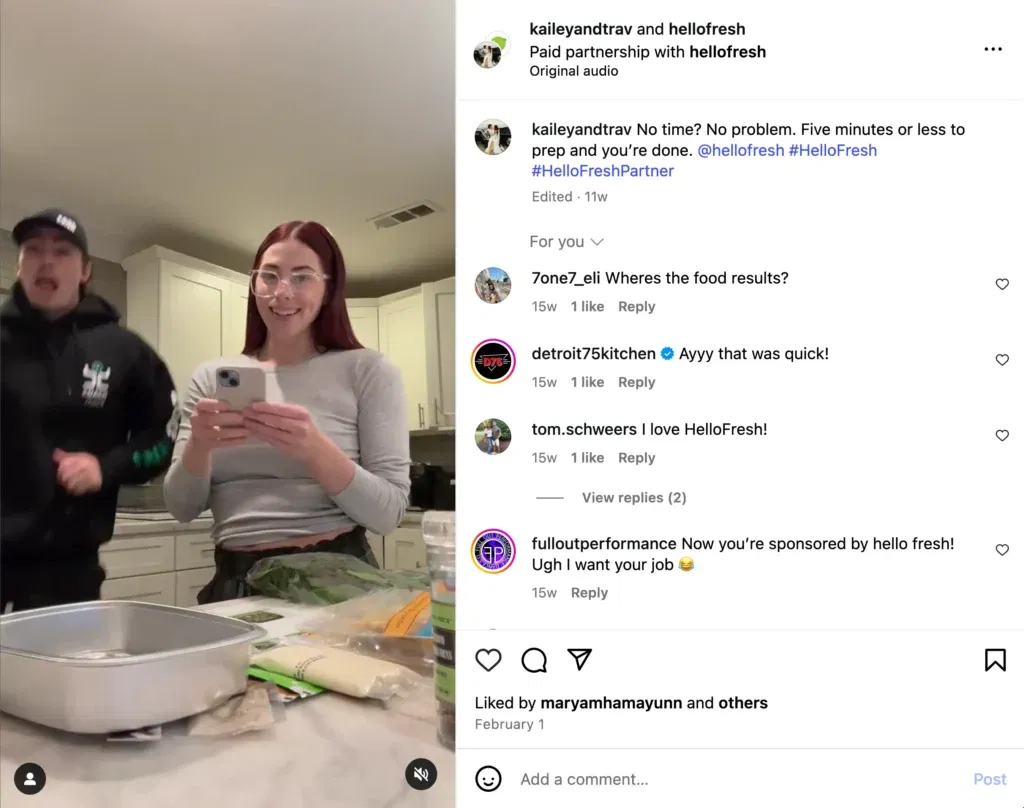
HelloFresh partners with creators like busy parents and food influencers to showcase how their meal kit delivery service fits seamlessly into their everyday lives. Their strategic micro-influencer marketing campaigns effectively highlight the convenience and variety of their offerings.
8. Amazon’s Audible

Audible is Amazon’s subsidiary for audiobooks, and like the brands we’ve discussed so far, it’s a prominent player (no pun intended) in its industry. Audible works with niche influencers like book bloggers, podcasters, and YouTube creators to promote its social media presence and attract more users.
The brand opens its doors to relevant micro-influencers and gives them creative freedom to promote the product in a way that best resonates with their audience.
One Instagram creator, Jesse Driftwood, posted content that demonstrated his love for running while a friend recommended a book and positioned Audible as a tool for listening to audiobooks on the go.
Can you see how that kind of content will resonate with other people who love running and reading? Authentic content like this is what drives brands that work with micro-influencers to opt for this strategy.
9. Sperry
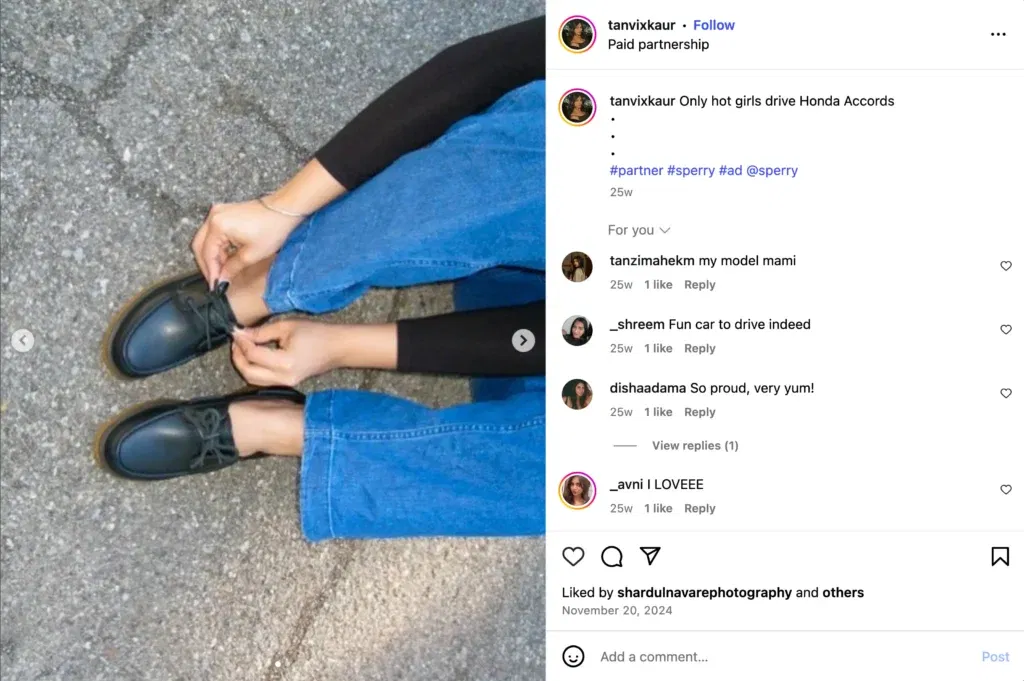
Sperry was smart in their micro-influencer marketing campaigns. Between 2016 and 2017, they worked with 100 small fashion influencers who had previously bought Sperry shoes. The strategic part was launching the campaign during the rainy season.
So, not only did they leverage the authenticity of smaller influencers, but they also used the weather to their advantage to demonstrate the quality of their shoes. It was no surprise when they got over 66% increase in website traffic.
10. Gillette
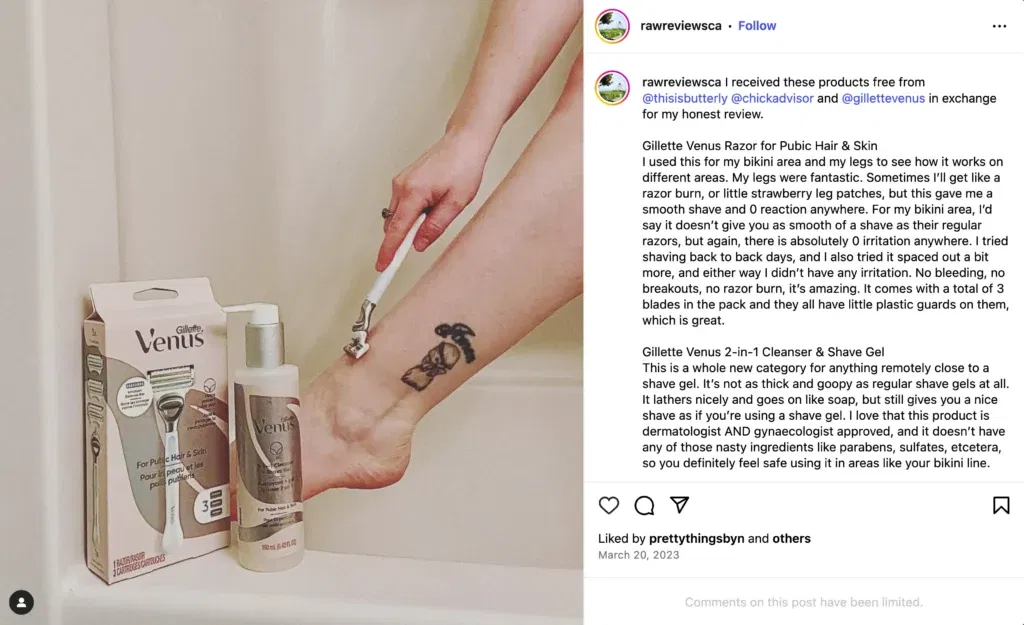
If you’re a millennial or older, you’ll surely know Gillette. But the brand realized that they hadn’t conquered the Gen Z market. So they launched a campaign to get beauty influencers, specifically women, to promote their Venus product line.
They sent boxes to these influencers so they could show their audience how well the product works. If this campaign had used only celebrities and big influencers, there would have been an influx of lavish bathrooms unfamiliar to the average person. However, by using micro and nano influencers who have typical bathrooms, Gillette could create deeper connections with the audience.
11. Airbnb
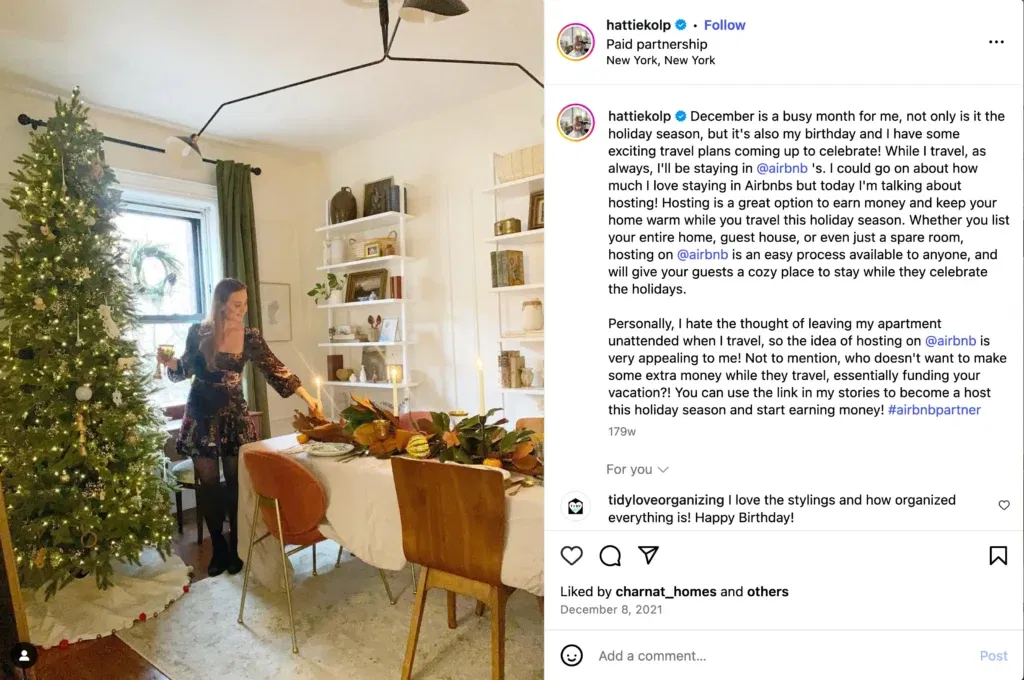
Airbnb partners with travel micro-influencers who highlight unique stays and travel experiences. These influencers often share visual travel stories, encouraging their followers to book trips.
For instance, an influencer can share short videos of different rooms, views, special features, and how the apartment made them feel. These micro-influencers often reply to comments asking about their stay to provide more information that helps their followers decide.
12. Levi’s
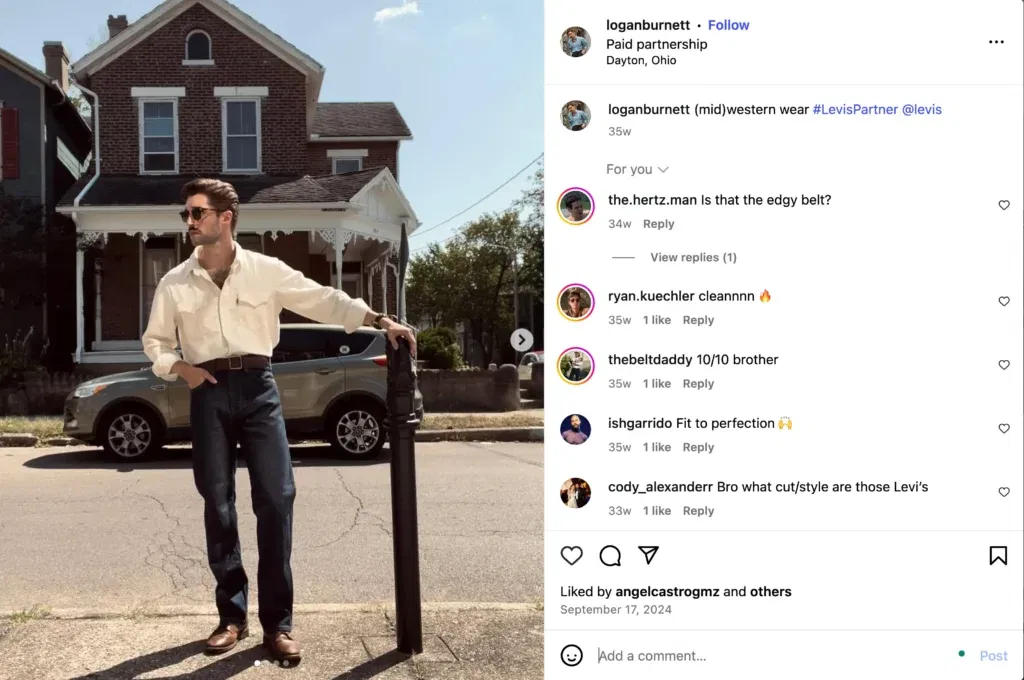
Working with small influencers is a culture at Levi’s, especially for events like product launches or sustainability campaigns. On such occasions, the brand collaborates with niche micro-influencers to create outfit posts and reels showcasing the product.
For example, an influencer for a sustainability campaign would wear recycled Levi’s denim, showing the audience the fit while emphasizing that it’s recycled. This kind of content will resonate with an eco-conscious audience and improve the brand image.
13. Thinx
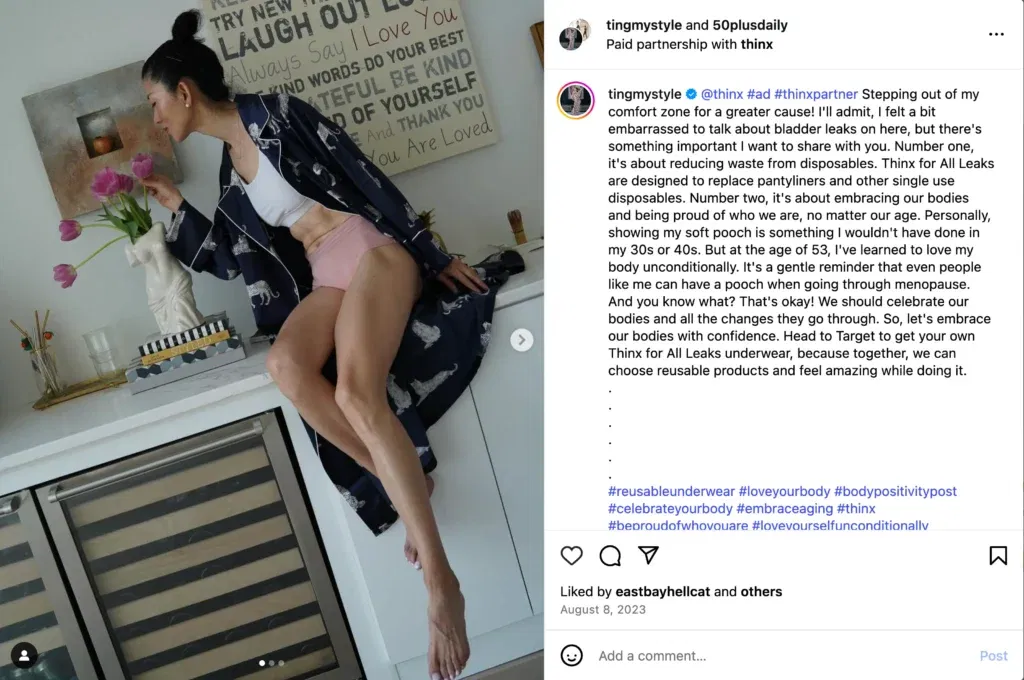
Thinx is a period underwear brand that works with micro-influencers to feature its product in honest, body-positive content. The brand encourages influencers in the health and wellness space to share personal experiences, helping normalize conversations about menstruation and women’s health.
14. Pura Vida Bracelets
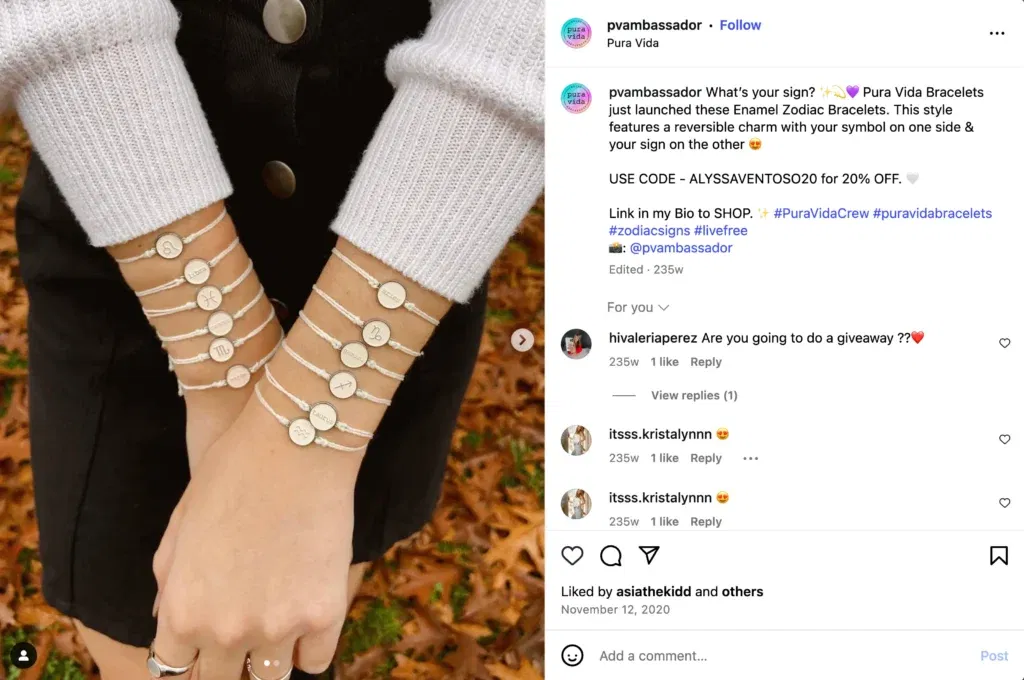
Pura Vida is a jewelry brand known for handcrafted accessories. The brand collaborates with small lifestyle influencers on Instagram and TikTok to create authentic UGC content to promote its products. This builds trust and drives conversions because it’s easier for consumers to trust other people’s reviews than a brand selling to them.
15. Fabletics
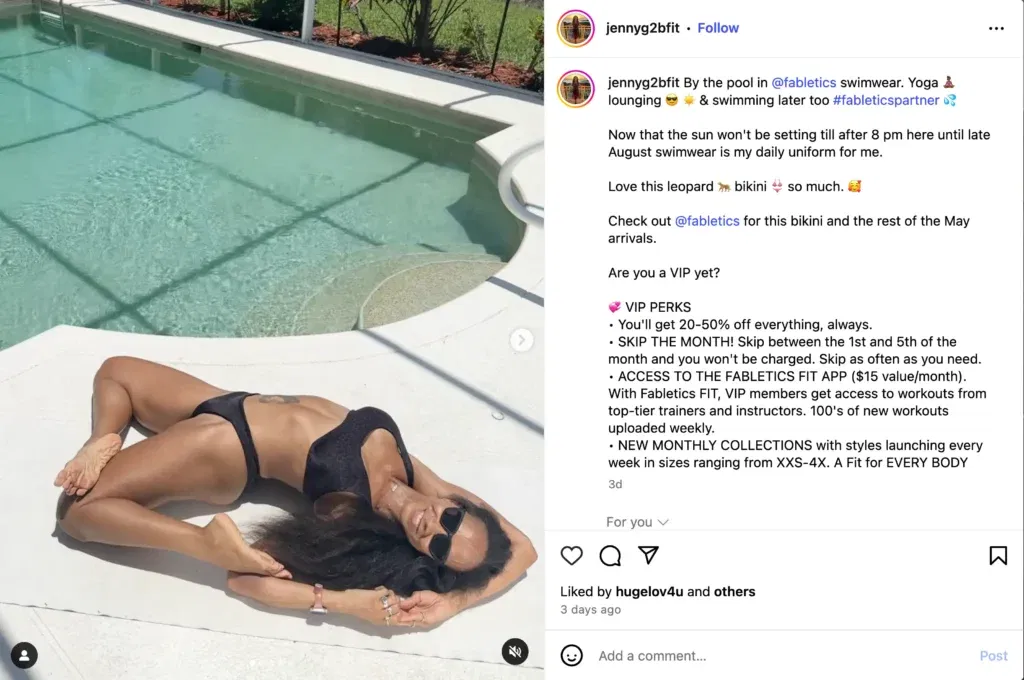
Fabletics uses influencer collaborations to boost brand awareness and engagement. They work with different sizes of fitness influencers to showcase their activewear during workouts.
They also encourage customers to post their Fabletics activewear using the hashtag #MyFabletics. Currently, there are over 170,000 posts with that hashtag. This is a prime example of how you make customers influencers for your brand.
16. Gymshark
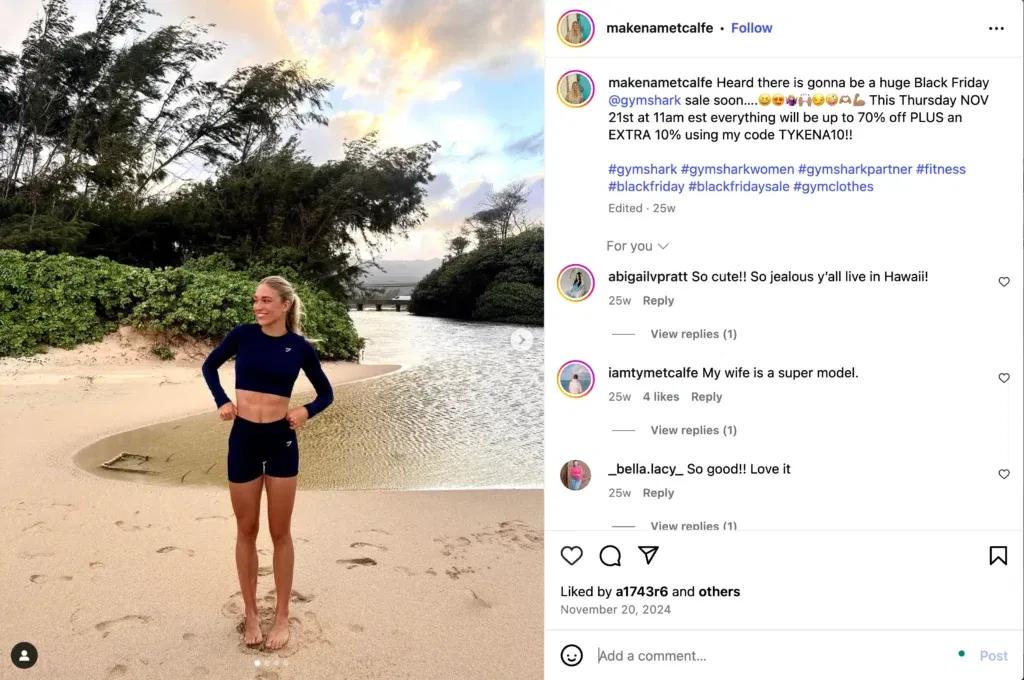
Gymshark leverages influencer partnerships to create genuine and relatable content on platforms like Instagram and YouTube. They usually work with fitness creators, offering free workout wear or monetary incentives to incentivize them to post. Like other brands working with micro-influencers, Gymshark invests in these partnerships to build trust with its target audience.
17. Lululemon
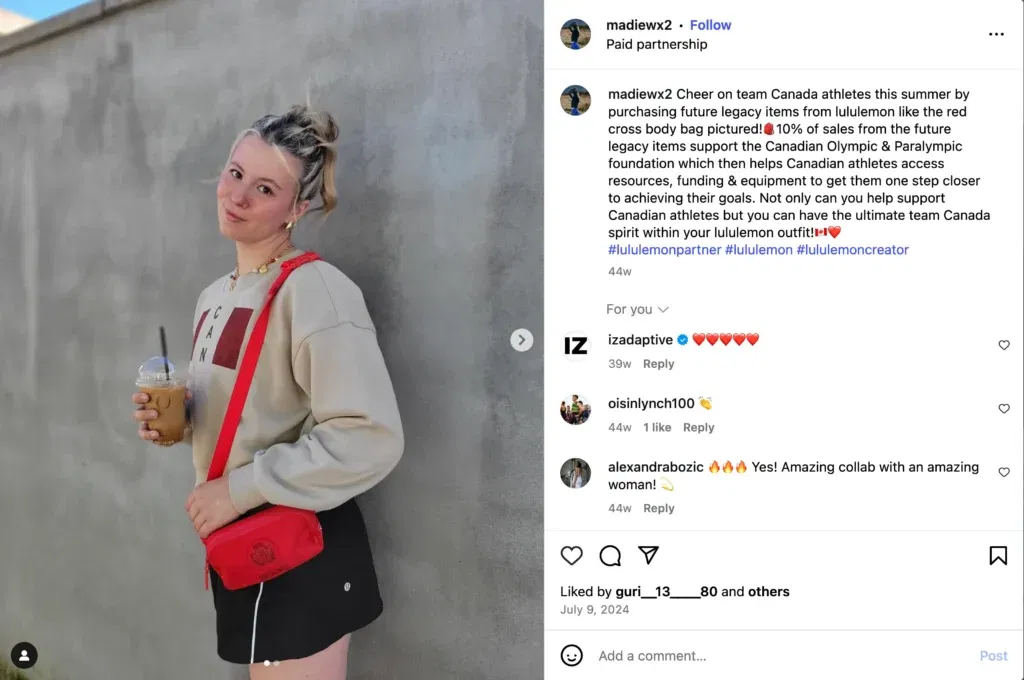
Lululemon has collaborated with micro-influencers to build a community. They work with fitness and wellness creators who share similar brand values. This has helped Lululemon increase brand engagement and loyalty and gain a competitive edge in its industry.
18. La Croix
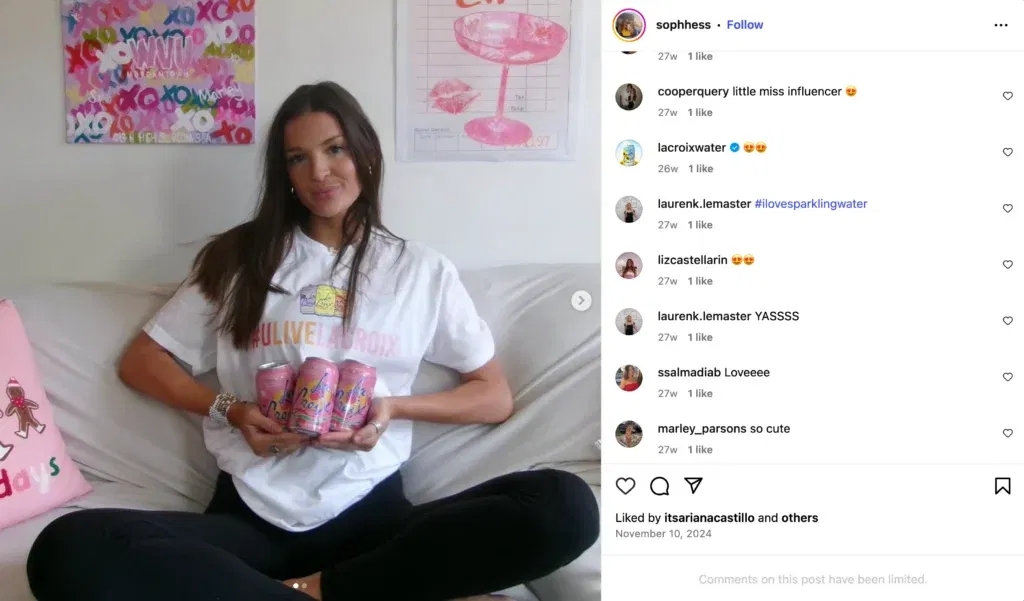
La Croix encourages micro-influencers to promote its product by sending vouchers for free cases of its drinks. The brand has made influencer partnerships part of its digital marketing strategy and even displays some content on its website and feed.
19. Banana Republic
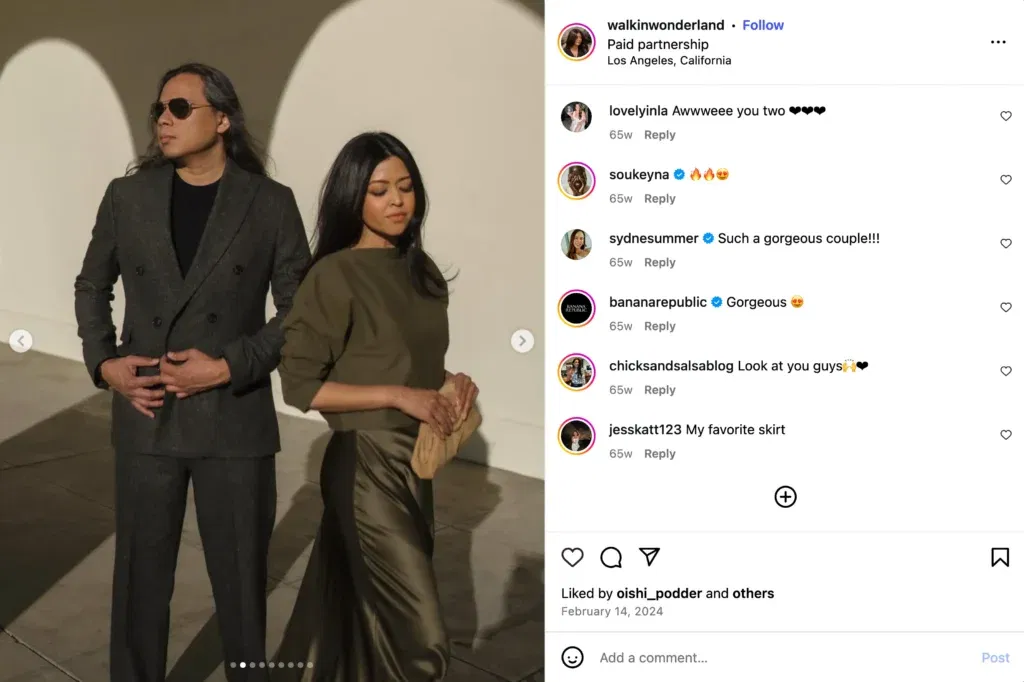
Banana Republic’s influencer program welcomes creators of all sizes, including micro-influencers. These creators often join seasonal campaigns and receive products to showcase in their content. The brand has run 13 campaigns, reaching over 43 million consumers through influencer collaborations.
Why Do Brands Work with Micro Influencers?
Brands often choose micro-influencers over macro or celebrity influencers for several reasons. The most important reason is higher engagement rates. Micro-influencers tend to have more active and loyal communities, resulting in better reach and interaction.
They also feel genuine and relatable to their audiences. Unlike larger influencers who may appear out of touch, micro-influencers share their honest thoughts, promote their products naturally, and connect personally.
Brands that work with micro-influencers also benefit from targeting niche audiences. Whether it’s beauty influencers, fitness experts, or sustainable living advocates, micro-influencers help brands reach the exact demographics they want.
Additionally, working with micro-influencers is cost-effective. Brands can collaborate with multiple creators without breaking the bank, creating a broader reach with more content diversity.
How to Collaborate with Micro-Influencers in 2025
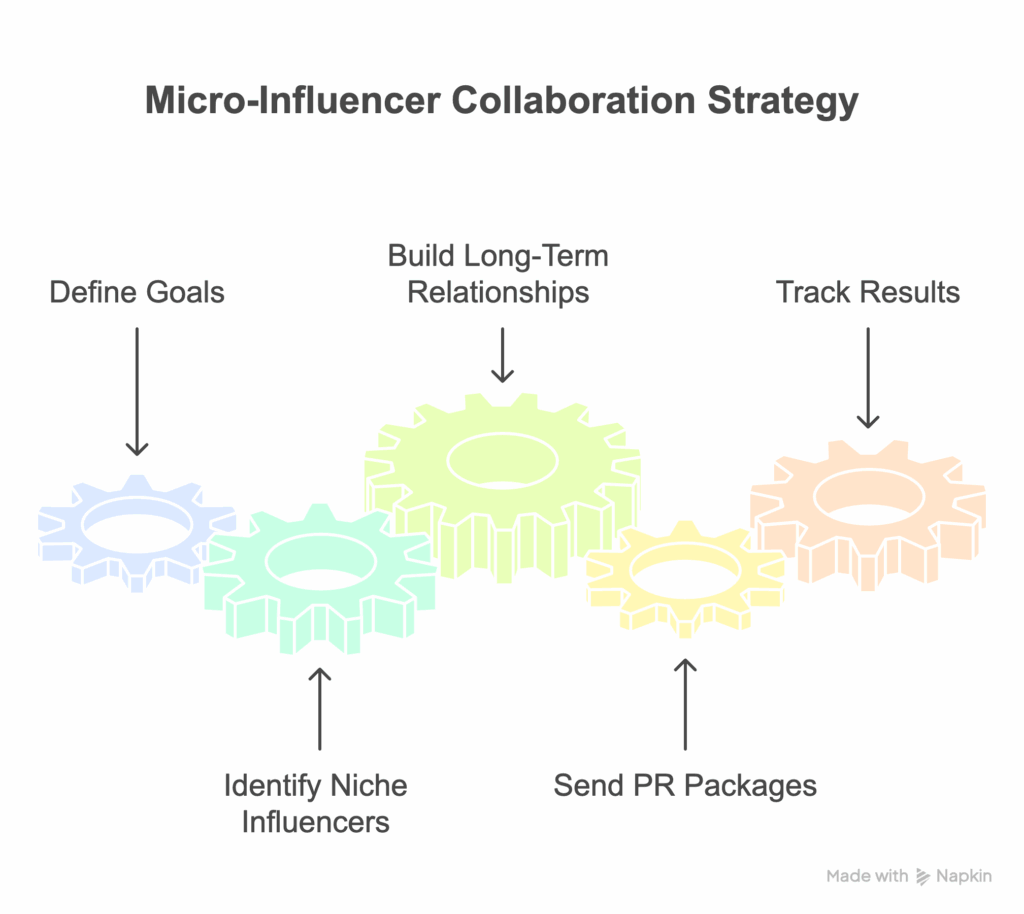
Your brand can also benefit from a micro-influencer partnership. But you need to create a strategy that works for your specific needs. For example, Gillette discovered they needed Gen Z on board, so they targeted them. Sperry leveraged the rainy season to make their campaigns more impactful. How can you make yours relevant and effective?
Start by Defining Your Goals
Determine what you want to gain from the influencer collaborations. Check what your brand needs at the moment. Is it brand awareness, sales to boost revenue, or UGC to connect with the audience?
When you figure that out, the next step is to set clear KPIs, such as website traffic and impressions, before reaching out to influencers.
Next, Look for Niche Influencers
Find influencers in your niche or complementary niches to promote your brand. You can find them manually on social media by searching for terms like “health influencer” on Instagram. Alternatively, use influencer platforms like Upfluence that connect influencers to brands.
If you choose to find influencers yourself, use this checklist to pinpoint the best for your brand.
- Brand Value Alignment: Ensure they align with your brand value. For instance, Lululemon only collaborates with influencers who uphold their brand values of healthy living and empowerment.
- Target Audience Match: Look into their audience demographics (location, age, interests, etc.) to see if they match your target audience.
- High Engagement Rate: Prioritize influencers with high engagement rates. If that’s missing, it indicates that the influencer’s posts don’t resonate with their followers.
- Organic Growth and Authenticity: Work with influencers who grew their audience through genuine content. Authentic content is the magic that makes micro-influencers work effectively for brands.
But even better, you can outsource this part to an agency like Vivian Agency to accurately find micro-influencers that align with your brand values and can effectively achieve your goals. You don’t want a hit-or-miss case with your campaign because of resources. So, the best option would be to outsource this task to professionals for better ROI.
Engage Micro-Influencers to Build Long-Term Relationships
Instead of one-off brand deals, develop a consistent influencer program or even a brand ambassador program. It’s reassuring for consumers to see the same face promoting your brand; it signals to them that the influencer truly enjoys your product.
But to pass this message effectively, the content has to be natural, authentic, and less salesy. Otherwise, they’ll categorize the influencer as an affiliate trying to sell to them.
Send PR Packages
You’re doing influencer partnerships wrong if the creators don’t get first-hand experience of the product you’re trying to sell. Think about it: How else would they give genuine reviews if they didn’t use the product?
If you can afford it, send PR boxes to your micro-influencers. They can even make content out of the unboxing video. However, if your brand can’t afford it, work with existing customers like Glossier does and offer some incentives, like discounts, in exchange for posting.
Track Results
Finally, track your influencer marketing campaign. Banana Republic could tell that their 13 campaigns reached 43 million consumers because they tracked relevant KPIs. When you measure your results, you gain insights into what’s working and what isn’t; with that information, you adjust your strategy.
Create an Effective Influencer Campaign with Vivian Agency
Working with micro-influencers is a smart way to connect with your target audience. People tend to trust people more than brands. While a brand might come off as just another company trying to sell, an authentic creator feels like a friend making a recommendation. That trust leads to stronger connections and eventually, more sales. This summarizes why you should join the ranks of brands that work with micro-influencers today.
So, if you’re ready to start, Vivian Agency can help. You don’t have to stress about outreach, logistics, or results. Vivian Agency helps you collaborate with micro-influencers that yield desirable results. Want more details about our process? Book a call here.
As you’ve read, established brands see the impact of micro-influencers and collaborate with them. There’s no reason you shouldn’t. If you want more details about how they can fit into your marketing strategy, let’s talk.
